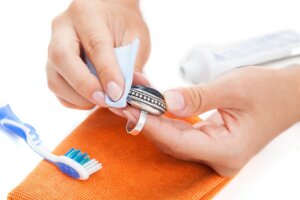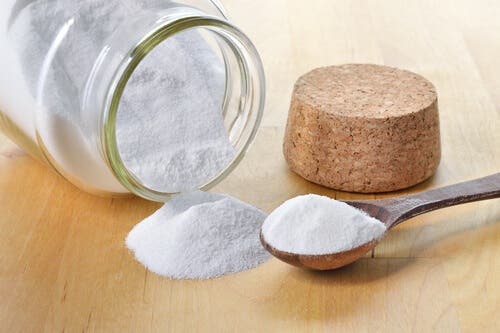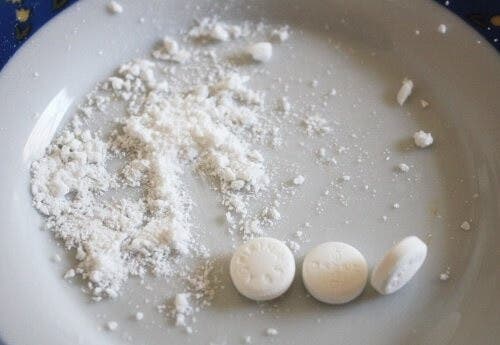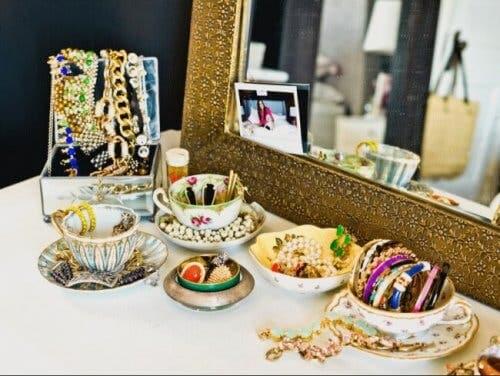How To Clean Rusty Jewelry

Does your favorite jewelry have traces of rust? Calm down and take a deep breath, because it can be fixed with a little skill and patience. In this article, we’ll share with you some tricks to clean rusty jewelry and make it look like new. You can’t miss it!
Jewelry care
Pay attention to the tips we’ll share below to make your jewelry last much longer in excellent condition.
Tips for cleaning rusty jewelry
We know of many household tricks that allow you to remove traces of rust from jewelry without having to resort to abrasive (and expensive) products. Read on to discover different ideas that can help you leave your jewelry looking like new without spending more!
Discover: Five Green Formulas to Degrease Kitchen Furniture
1. Baking soda

This is one of those products that you always have at home. Baking soda is perfect for cleaning all kinds of surfaces, from countertops to stains on clothing and, of course, it can also be used to clean rusty jewelry!
Wet a cloth and put a bit of baking soda on it. Rub the piece of jewelry gently, rinse and dry well. Repeat the process as many times as necessary.
Note: This option is not suitable for gold jewelry because it could damage the color.
2. Toothpaste
This is grandma’s trick and it works perfectly! Polish your necklaces and other metal jewelry with toothpaste and the help of a cloth. Rinse and rub with a dry cloth to remove moisture and shine.
3. Aspirin

Take a glass of water and put in two fizzy aspirins. Dip your jewelry in the mixture and let it sit for about 10 minutes. When you remove them, there’ll be no more traces of rust!
4. Cola drink
Cola is another excellent option to remove rust. The process is as easy as dipping the jewelry in a glass of cola and waiting a few minutes. Then empty the glass and just polish each piece with a cloth.
Note: Don’t use this recipe to clean gold jewelry because it could affect the appearance.
5. Baking soda and vinegar
If the rust is very resistant, you can try mixing a little white vinegar with a teaspoon of baking soda in a bowl. When you start to see bubbles, submerge your jewelry for a few minutes. Remove it, dry with a cloth and voila!
You should also read: 6 Spectacular Uses for White Vinegar
How to prevent damage to jewelry

Now that your jewelry is shining again without any traces of rust, you should start taking proper care of it! To keep it from darkening and losing its shine, you can take some simple precautions:
- Avoid mixing accessories: Ideally, you should store them separately to increase their lifespan and prevent rust from appearing. Jewelry cloths are usually a good option.
- Separate the accessories according to material: Gold should be stored with gold, silver with silver and other jewelry separate to avoid damaging the other accessories.
- Try to keep your accessories from coming into contact with salt water, soap, chlorine, and other abrasive elements. You shouldn’t wear your jewelry to the beach and you should also remember to take it off when you shower.
- Don’t wear jewelry when you exercise, as sweat could affect the color of the item.
- Don’t let your jewelry come into contact with perfume or creams in order to prevent it from affecting their appearance.
- Store your jewelry in a cool, dark place to minimize the chances of oxidation.
- Protect your jewelry with clear nail polish.
Don’t throw out your jewelry just because it has a bit of rust. As you’ve discovered, cleaning rusty jewelry isn’t that hard. We hope that these tricks are useful for you and that your jewelry looks like new!
All cited sources were thoroughly reviewed by our team to ensure their quality, reliability, currency, and validity. The bibliography of this article was considered reliable and of academic or scientific accuracy.
- MedlinePlus. Aspirina. https://medlineplus.gov/spanish/druginfo/meds/a682878-es.html
- MedlinePlus. Bicarbonato de sodio. https://medlineplus.gov/spanish/druginfo/meds/a682001-es.html
- ¿Por qué el vinagre es bueno para tantas cosas? – BBC News Mundo. (n.d.). Retrieved December 14, 2018, from https://www.bbc.com/mundo/noticias/2014/02/140204_ciencia_usos_domesticos_vinagre_np
- ¿Qué Es El Ácido Acético? Principales Usos Y Aplicaciones. (n.d.). Retrieved December 14, 2018, from https://www.acidoacetico.com/
This text is provided for informational purposes only and does not replace consultation with a professional. If in doubt, consult your specialist.








